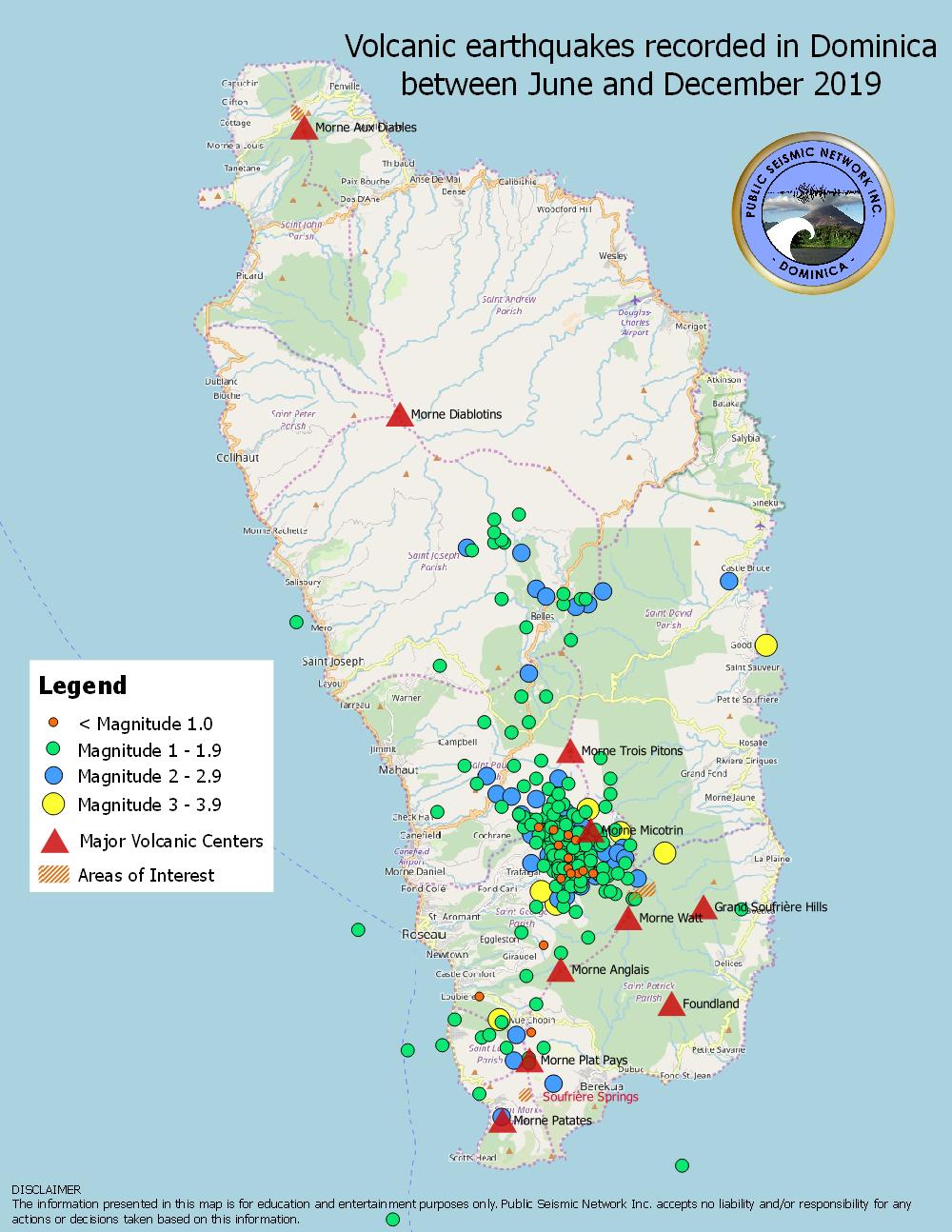The Wotten Waven Caldera was identified and named by Demange et al. (1985). The caldera, the margins of which are partially fault controlled, is elongated west southwest, parallel to the chain of Pelean volcanoes that parallel the southern margin of the Central graben. It measures 7 km by 4.5 km. The Micotrin dome is located on its northeastern margin.
The Wotten Waven caldera was inferred to have formed by the subsidence caused by the eruption of the Roseau Tuff (Sigurdsson 1972). The deposits belonging to the Roseau Tuff have been subdivided into three units (Demange et al. 1985).
Unit 1 is dominantly composed of thick welded ignimbrites that were channeled into a valley between the Morne Trois Pitons and Morne Anglais volcanoes.
The ignimbrites of Unit 2 were preceded by Plinian fall activity. The Unit 2 deposits, which are well exposed in the Goodwill quarry just north of Roseau on the west coast, have a much more widespread aerial extent than Unit 1.
Unit 3 is distinct from Units 1 and 2 in that, in addition to pumiceous deposits, it also contains extensive block and ash flow deposits that usually overlie the pumiceous deposits. These block and ash flows appear to have originated from the Micotrin domes, suggesting that the eruption of the Roseau Tuff terminated with the extrusion of Pelean domes and the generation of associated block and ash flow deposits.
Based on available 14C dates, the Plinian eruptions that produced the Roseau Tuff occurred over a >20,000 year period (46,000 to 26,380 years B.P.). As all of these dates are from Units 2 and 3, the eruption of Unit 1 must be prior to 46,000 years B.P. Within southern Dominica there are other ignimbrite sequences, which also give ages within this range suggesting that they may also be associated with the Plinian eruptions that produced the Wotten Waven caldera.
The main outcrops of ignimbrites contemporaneous with the Roseau Tuff outside of the Wotten Waven-Roseau area include thick sequences on both the east coast in the vicinity of Grand Fond and Rosalie, and the south coast at Grand Bay.
Recent eruptions from the Wotten Waven caldera produced small volume block and ash flow deposits and ignimbrites that have been dated at 1,160 and 1,020-1,050 years B.P. (Lindsay et al. 2005). These deposits, which are exposed in the northern part of the caldera, are interpreted to represent eruptions from the Micotrin domes, and from vents along the northern margin of the caldera.
Main Settlements in and Surrounding the Wotten Waven Caldera
Laudat, Trafalgar, Morne Prosper, Wotten Waven, Roseau
Recent Activity at the Wotten Waven Caldera
In December of 2018, a swarm of volcanic earthquakes emanating from the Roseau Valley/Wotten Waven Caldera area started with several being felt by residents of the area. These events continued throughout 2019 peaking on June 15, 2019, with a particularly vigorous period of more than 500 events in a 24 hour period.
Volcanic Hazard Zone for a dome forming eruption from Mt. Micotrin in the Wotten Waven caldera.


